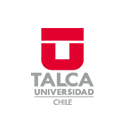
1 results
Search Results
Now showing 1 - 1 of 1
Item Comparación del índice de vegetación de la diferencia normalizada (NDVI) obtenido desde imágenes satelitales y radiometría de campo en un huerto de olivos cv. arbequinaAutores: Fuentes Peñailillo, Fernando PabloProfesor Guía: Ortega Farías, SamuelProfesor Informante: Carrasco Benavides, Marcos RodrigoEl presente trabajo consistió en la comparación entre valores del índice de vegetación de diferencia normalizada (NDVI) obtenidos a partir del satelite Landsat 7 (NDVISAT) y un radiómetro multiespectral portátil en terreno (NDVIPOND). Este estudio se realizó durante las temporadas 2008/2009, 2009/2010 y 2010/2011 en un huerto de Olivos (Olea europaea cv. Arbequina) ubicado en el valle de Pencahue, Región del Maule, Chile (35º23´ lat. Sur; 71º44´ long. Oeste; 90 m.s.n.m). Para realizar la comparación, los valores de NDVI obtenidos con radiometría de campo fueron ponderados de acuerdo a la fracción de cobertura vegetal (fc), la cual alcanzó aproximadamente un 30% de la superficie. Los resultados obtenidos indican que la relación entre los índices, presenta una pendiente significativamente igual a 1, con un nivel de confianza del 95% (α de 0,05). El análisis estadístico además indica que el error cuadrático medio (RMSE), el error absoluto medio (MAE) y el índice de acuerdo fueron 0,019, 0,014 y 0,98, respectivamente. La mejor comparación entre NDVIPOND y el NDVISAT presento una diferencia igual a cero (en 4 fechas de medidas) y en contraste la peor comparación presentó una diferencia de un 11,2%. Las diferencias observadas entre los NDVI obtenidos a ambas escalas pueden estar asociadas a que no se eliminaron los efectos atmosféricos (corrección atmosférica) en los valores de reflectancia a nivel de satélite o a errores inducidos por la dificultad en la obtención de valores puros de NDVI en la radiometría de campo sobre Olivos, dada la alta porosidad presente en el dosel del cultivo. Finalmente en cuanto a la relación entre el Kc y el NDVI está presento un R2 de 0,71 para valores correspondientes a la temporada 2009-2010 en donde estos coincidieron con lo reportado por la literatura. Palabras clave: Coeficiente de cultivo, METRIC, Landsat, Fracción de cobertura, Índice de vegetación./ ABSTRACT: A comparison between normalized difference vegetation index (NDVI) derived from satellite data (NDVIPOND) and a portable multispectral radiometer (NDVISAT) field was carried out. This study was performed in the 2008/2009, 2009/2010 and 2010/2011 seasons, in an olive trees orchard (Olea europaea cv. Arbequina) located in the valley of Pencahue, Maule Region, Chile (35 ° 23' Lat. South, 71; 44' Long W, 90 m.a.s.l.). Before making comparisons, the NDVI values from field radiometry were weighted according to the fraction of vegetation cover (fc), which reached about 30% of the surface. The results indicate that the linear fit between indices (NDVI weighted and NDVI satellite) have a significantly slope equal to 1, with a confidence level of 95% (α of 0.05). Statistical analysis also indicates that the mean square error (RMSE), mean absolute error (MAE) and the index of agreement were 0.019, 0.014 and 0.98, respectively. The best comparison between both NDVIs show differences equal to zero (in 4 dates) and the worst comparison showed a difference of 11,2%. The differences observed between NDVIs obtained in both scales can be associated with atmospheric effects (not atmospheric correction) in the reflectance values at satellite level or errors induced by the difficulty to obtain pure values of NDVI in olives plant using radiometry, given the high porosity present in the canopy. Finally regarding the relationship between Kc and NDVI is presented an R2 of 0.71 for values for the 2009-2010 agricultural season where these coincided with that reported in the literature. Keywords: Crop coefficient, METRIC, Landsat, Fractional cover, Vegetation index

